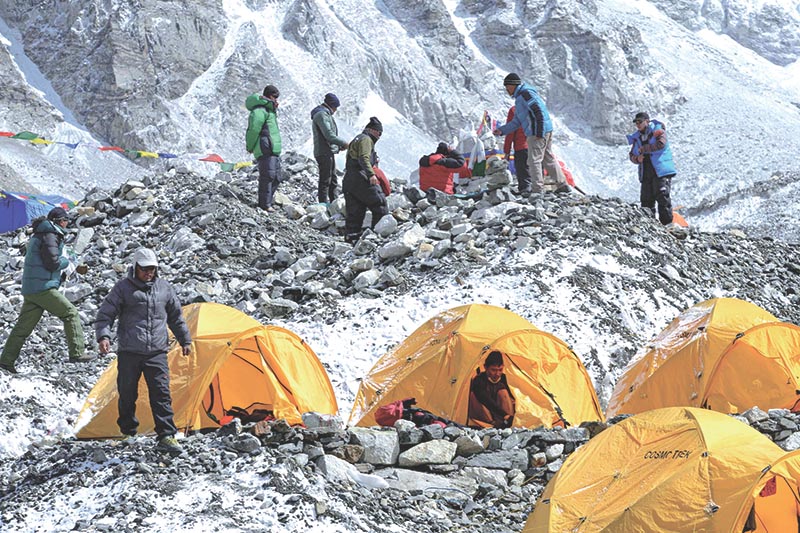Sherpa shortage takes a toll on Everest
Everest Base Camp, May 18
The Everest industry is suffering from a dangerous shortage of its most important resource: experienced Sherpa guides.
Ethnic Sherpas from the valleys around Everest have become synonymous with high altitude climbing.
The number of Everest climbers has more than doubled in two decades, however, and the Sherpa supply has not kept pace. Raw recruits are now being used to reach the top and it has already taken a toll.
Dawa Sange Sherpa, 20, summited Mount Everest last year — a first for him and the climber he was with. On the way down, the cold, lack of oxygen and exhaustion took hold. The pair collapsed just below the summit and were found hours later, barely alive. “My friend said to me, ‘He’s done’. But I found a small pulse in him,” said guide Ang Tshering Lama, who found Sange. Lama dragged the unconscious Sange back down the mountain while others helped his client. Both had severe frostbite. Sange lost all of his fingers, spelling the end of his short career on Everest.
Sange was not meant to be guiding that year. He was planned to be carrying equipment up the mountain, a job many young Sherpa do before graduating to become guide.
“I was in the second team, in which untrained Sherpa usually carry the equipment and food from the base camp to Camp II, III and IV,” Sange said.
But his employer, Seven Summit Treks, the largest Nepal-based expedition operator, had more than 60 clients on Everest and needed someone to take a paying climber to the top.
Head of Seven Summit Treks Mingma Sherpa said Sange was ready to be a guide and had previously summited Everest. Sange said he had not.
So far this year at least four Sherpas from Seven Summit Treks have already sustained frostbite, according to base camp sources.
Seven Summit Treks — which charges about $20,000 to climb Everest, less than a third of other operators — blames rivals for the shortage, accusing them of not investing in the next generation of Sherpa guides.
“They take only experienced Sherpas. They don’t want to spend extra money to train new Sherpas,” Mingma said.
Many experienced Sherpa who started working for the first commercial expeditions in the 1990s are retiring. Others have left Nepal for rival mountaineering countries buoyed by their reputation for being strong and dedicated. They have earned enough money to educate their children in Kathmandu, or even in India and the United States.
“They are educated so they can find other jobs,” said Kami Rita Sherpa, who has been guiding on Everest since 1994 and admits he would never allow his son to work in such a “risky business”.
“If the old climbing guides don’t bring their kids into this sector, the number of climbing Sherpas will definitely decline,” he continued.
“Those from the next generation won’t join this field.”






